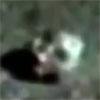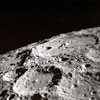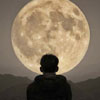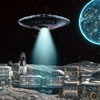A Funny Thing Happened On The Way To The Moon
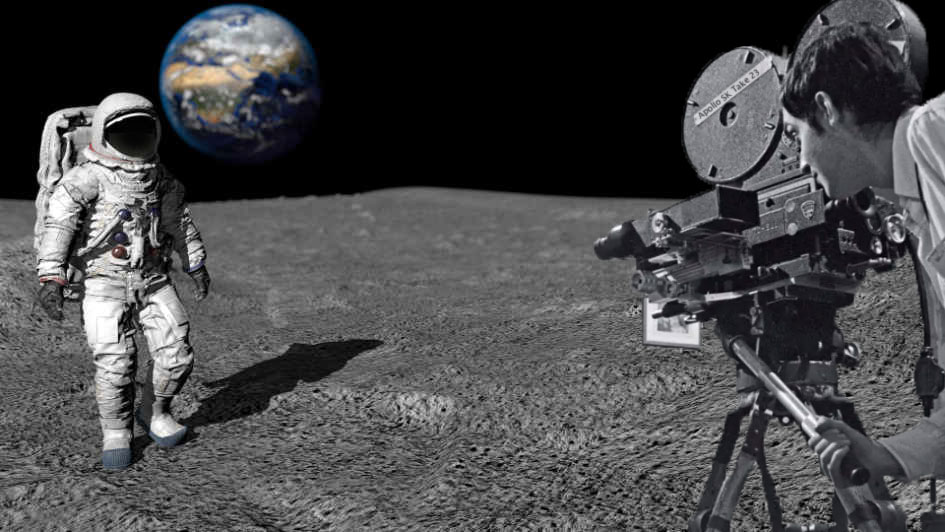 If it wasn’t possible to better the Soviets in the space race, which was really a race of technology armaments, what could be done?
If it wasn’t possible to better the Soviets in the space race, which was really a race of technology armaments, what could be done?
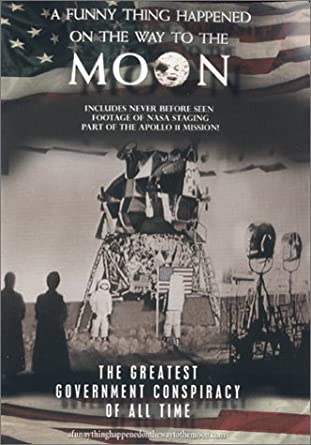 How could America offset the threat of superior weaponry? Throughout the history of rivalry and war, astute generals of lesser armies than their counterparts have used deceit and misinformation as a method to achieve victory.
How could America offset the threat of superior weaponry? Throughout the history of rivalry and war, astute generals of lesser armies than their counterparts have used deceit and misinformation as a method to achieve victory.
Surrounding the earth, beginning at an altitude of 1,000 miles and extending an additional 25,000 miles, lie lethal bands of radiation called the Van Allen Radiation Belts.
Every manned space mission in history (including Mercury, Gemini, Soyuz, Skylab and the Space Shuttle) has been well below this deadly radiation field…all except Apollo.
Recently uncovered footage of the crew of Apollo 11 staging part of their mission proves that the astronauts never made it beyond earth orbit. The goal was to fool the Soviet Union about US strategic capability during the height of the Cold War. Deceit, Greed, and Injustice… A sad thing happened on the way to the moon. The truth will astound you!
A Funny Thing Happened On The Way To The Moon
Interview With The Filmmaker Bart Sibrel
Some Excerpts (REVIEWS)
Bart Sibrel’s A Funny Thing Happened On The Way To The Moon is the original (and still definitive) documentary that exposes the fraud and deception that went into fabricating the Apollo missions, one of the most excruciatingly silly fabrications of the 20th century.
Many people cannot IMAGINE that their government can lie to them. Historical context is everything in understanding why anything happens. Coupled with the evidence of forgery, this film explains how and what led to understanding of why the moon landings were faked.
Bart Sibrel is one the most impressive, thoughtful thinkers of our age. He draws you in and explains the history and subject matter better than anyone else. His follow up book “Moon Man” is equally epic. I respect his courage and convictions and admire him greatly. His works and this film will ironically bring you closer to God. God Bless this man and his journey.
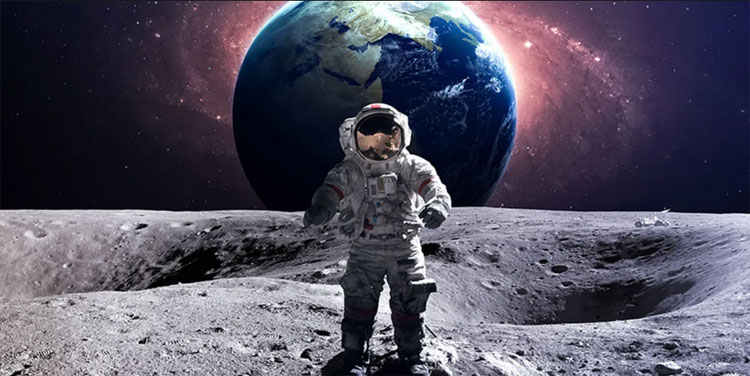 More On The Moon Landings
More On The Moon Landings
One Giant Hoax
by Jim McCluskey
Did NASA fake the moon landings? On July 20, 1969 millions of television viewers around the world watched as Neil Armstrong stepped down from a lunar landing module onto the surface of the Moon and intoned the now famous words “That’s one small step for man, one giant leap for mankind.”
Mission Impossible
Ten years before Apollo 11 supposedly went to the Moon Bill Kaysing was head of technical publications at Rocketdyne Systems, a division of Boeing that still makes rocket engines for the space program. In his book We Never Went to the Moon Kaysing says that in 1959 Rocketdyne estimated the chances we could safely send a man to the Moon and back were between slim and none (about 14% actually). According to Kaysing there is no way the space program could have advanced enough in the next ten years to send the three Apollo 11 astronauts to the Moon, followed by five more Moon landings in the next three years (not including the troubled Apollo 13 mission which only orbited the Moon).
Recently NASA experts have admitted we do not have the capability of manned missions to the Moon now. How could we have done it more than 30 years ago? Even simulations these days take powerful computers, but the computer on board Apollo 11 had a capacity smaller than many of today’s handheld calculators.
Kaysing and others think they know the answer, and cite a number of anomalies that lead them to conclude the Apollo missions were faked.
The Fluttering Flag
In 1990 a New Jersey man named Ralph Rene was reviewing old footage of the Moon landing. As he watched the American flag fluttering in the airless atmosphere of the Moon it suddenly dawned on him, “How can there be a breeze if there is no air?”
Rene’s suspicions led him to research inconsistencies in the Moon landing story, and to publish a book called NASA Mooned America. The fluttering flag was just the beginning.
Phony Photos
A close look at the thousands of excellent still photos from the moon landings reveal some very odd features. For one thing, they are a little too excellent. The astronauts seem to be well lit on all sides, regardless of where the sunlight is coming from, almost as if there was some artificial light source.
Defenders say that light reflected from the lunar surface bounced back to light the shadow side of the astronauts. Oddly, that same reflective light does not illuminate the dark side of lunar rocks which are even closer to the ground.
Shadows seem to fall in different directions, and look to be different lengths even for objects of a similar height, such as two astronauts. This leads some to conclude there were multiple light sources—some much, much closer than the sun.
Even when everything else around is in shadow, the American flag and the words “United States” are always well lit, and sometimes seem to be in a spotlight. Was someone trying to get the most PR advantage out of the fake photos?
Starlight, Star Bright
Some skeptics cite the absence of stars in photos of the lunar sky as evidence that the photos were not taken on the Moon. After all, in the dark sky of the Moon with no atmosphere the stars should be clearly visible. That much is true; to the naked eye stars in the sky of the Moon should be magnificently clear. But they wouldn’t show up on film which was set to expose the much brighter lunar surface. On the other hand, why were there no pictures taken of the stars in the lunar sky? Surely how the stars look from the Moon would have interested many people. Was it because astronomers could spot the fake too easily?
Where’s the Dust?
One of the most memorable images NASA released from Apollo 11 was the imprint of Buzz Aldrin’s boot in the lunar dust. But the lunar landing module apparently had less of an impact on the Moon’s surface. In the photos there is no visible disturbance from the high-powered thrust engines the landing module used to land, nor is there any dust in the landing pads. If the landing module blew away all the dust, as some speculate, how did Aldrin make such a nice footprint?
Deadly Radiation
In a recent press conference a NASA spokesman said that radiation is one of the biggest obstacles to space travel. One has to assume it was also a problem 30 years ago.
Two doughnut-shaped rings of charged particles, called the Van Allen Belts, encircle the Earth. To get to the Moon astronauts would have to pass through the belts, exposing themselves to possibly deadly radiation unless they had a lot more protection than the thin shield the Apollo spacecraft provided. And that’s just the beginning.
Once outside the radiation belts and the Earth’s protective atmosphere astronauts would be exposed to solar radiation. Expert opinions differ as to whether or not the radiation the astronauts would have been exposed to would be life threatening. But inexplicably not one of the astronauts from the seven lunar missions even got cancer, a well known result of exposure to radiation.
Even more sensitive to radiation is photographic film. On all those beautiful Moon photos there is absolutely no sign of radiation damage. Why not?
Follow The Bouncing Astronaut
What about the movie footage showing the astronauts demonstrating the Moon’s low gravity by bouncing around the surface? Could that have been faked? Skeptics say yes, easily. In the Moon’s gravity, 1/6th that of Earth, the astronauts should have been able to leap ten feet in the air. But they didn’t. In fact in the movie footage they don’t get any farther off the ground than they could on Earth. And if it looks like they are moving in slow motion, that is because they are—half speed to be exact.
Bill Wood, a scientist who worked for the NASA subcontractor responsible for recording the Apollo signals and sending them to NASA headquarters at Houston, explains that the original film footage, shot at 30 frames per second, was transferred to video which runs at 60 frames per second. The footage the public saw was half the speed of the original. If the film of the astronauts walking on the surface of the Moon is view at regular speed their movements look remarkably normal.
Moon Rocks
The only physical evidence we have that astronauts actually went to the Moon, besides the photos and film footage, is lunar rocks. NASA points to the fact that scientists around the world have examined the rocks brought on the Apollo missions and have no doubt that they originated on the Moon. But the Moon isn’t the only place to find Moon rocks.
Remarkably well preserved in the ice of Antarctica scientists have found remnants of lunar rocks blasted off the Moon by meteoric impacts. Numerous expeditions have explored the continent looking for rock samples from the Moon, Mars and comets.
In 1967, two years before the Apollo mission, such a group visited Antarctica, including the ex-Nazi rocket scientist Wernher von Braun, by then working for NASA. Why a rocket scientist would be sent to look for rocks is a good question. Hitler reportedly believed Antarctica concealed a subterranean paradise. Moon rocks may have been the least of what NASA and the ex-Nazi were after.
How and Why
These anomalies and more in the information given to the public about the Apollo Moon missions have caused many to question whether we really did send anyone to the Moon. But if the Moon landings were faked, how was it done, and why?
The why is fairly easy to understand. The 60s were the height of the Cold War. The Space Race was on and the Soviet Union had already beat the US with the first satellite to orbit earth, the first man in space (and later the first woman), and the first space walk, among other important firsts. The US was clearly behind. In 1961, President Kennedy issued the challenge “I believe this nation should commit itself to achieving a goal, before this decade is out, of sending a man to the moon and returning him safely to the Earth.” The Apollo program was born, and five months before the end of the decade NASA showed pictures of Americans on the Moon. We had beat the Russians to the most important prize, and we felt good about it. Mission accomplished.
But was it accomplished by actually sending men to the Moon, or just making it look that way? Investigative journalist Bart Sibrel claims to have found a mislabeled NASA film showing multiple “takes” of a scene shown to the public as part of the “live” broadcast of Apollo 11’s flight. In the footage the astronauts appear to be rehearsing the lines the public heard. Sibrel claims to have spent half a million dollars investigating the Moon landings, and produced a video called A Funny Thing Happened on the Way to the Moon.
In 2002 Sibrel, backed by a Japanese film crew, confronted Buzz Aldrin outside a Beverly Hills hotel and challenged him to swear on a Bible that he had really gone to the moon. Aldrin responded by punching Sibrel in the face.
What about those excellent still photos? Many believe they were staged, perhaps in a secret location in Nevada, or even in a giant geodesic sound-stage in Australia. Either way it would have been much easier to manipulate the lighting to get the results shown in the Moon landing photos.
Would such a monstrous hoax have been easy to pull off? Certainly not. But it seems more possible to many than actually sending someone to the Moon and back. Consider this statistic: Of the seven manned missions to the Moon, only Apollo 13 had trouble, which is an 86% success rate. In the years since the Apollo program 25 unmanned craft have been sent to Mars. Only seven have succeeded—a 28% success rate. Which figure seems more realistic?
Just When You Thought it Was Safe
Before you get too comfortable with the idea that the government created a huge hoax because we couldn’t have possibly gone to the Moon, you should know there are quite a few people who believe the film is fake, but that we did actually go to the Moon. So why fake it? To cover up what we REALLY found there. But then again that’s another story…
We Never Went to the Moon by Bill Kaysing
NASA Mooned America by Ralph Rene
Posted in Other Topics, The Moonwith comments disabled.


